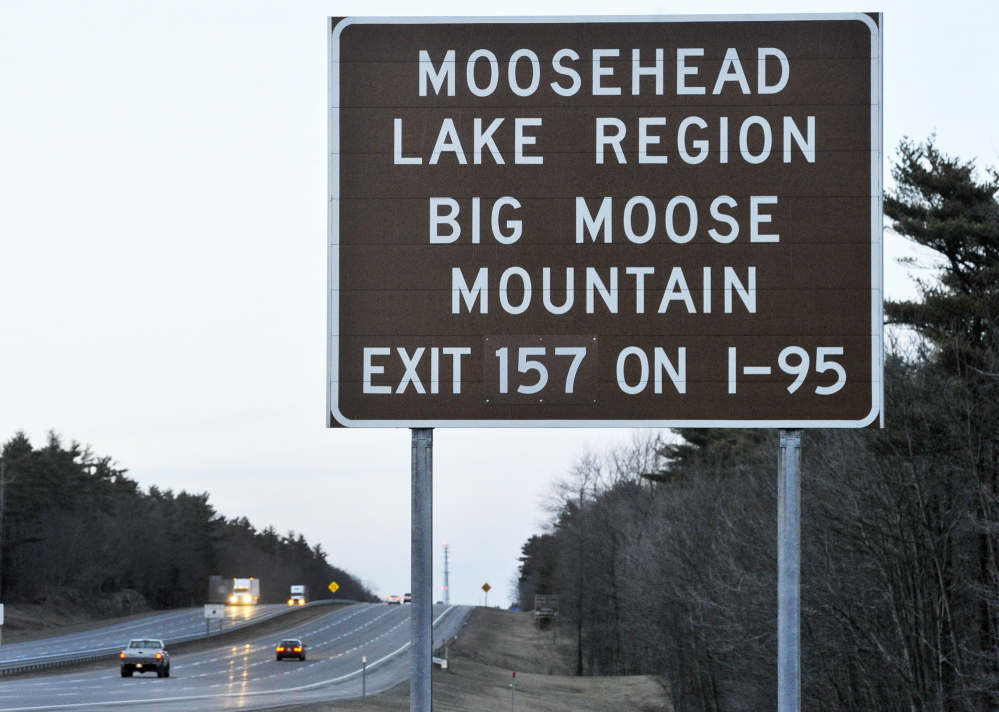Billboards have been banned in Maine since 1977, but the state still has a problem with roadside signs.
Along the Maine Turnpike and interstate highways, brown signs direct motorists to destinations not immediately off an exit. Without any real policy governing who gets a sign and where it can go, however, it has been up to the Legislature to decide on a case-by-case basis.
That’s led to some strange placements – such as the sign in Farmingdale for the University of Maine at Fort Kent, more than 250 miles away – and some claims of unfairness. It also has drawn a rebuke from the federal agency that directs millions of transportation dollars Maine’s way.
So it is up to the Legislature to solve the problem it created by adopting a set of policies that meet federal standards and clearly state who gets a sign, and where it can go.
BILL A GOOD BLUEPRINT
L.D. 1831, now before the Transportation Committee, is a pretty good blueprint for doing just that.
The bill concerns the brown signs, known as supplemental guide signs. Federal guidelines, ultimately attached to funding, say these signs cannot be used to promote a business, or to guide people to areas that don’t meet certain population, distance and traffic measures.
The bill, as initially written, would affect 68 of the 225 supplemental guide signs on the turnpike, Interstate 295 and Interstate 395, a spur connecting Bangor to Brewer. Of the 68 signs in question, 42 would be removed and 26 would be relocated, though likely not until the signs come up for their scheduled replacement, in perhaps two years.
The proposal was sought by the committee after it was faced a year ago with nine requests for signs, ranging from a historical site in Brewer to three semiprivate academies. That’s the way signs typically have been handed out, by legislative action, often as a favor to a constituent or a fellow legislator.
If enacted, the bill’s impact would stretch across the entire highway system.
A sign for Quoddy Head State Park in Washington County, which is too far from the interstate, would be taken down. So would signs for Arundel, Hallowell and Topsham, all of which do not meet standards because the towns are not immediately off an exit and do not meet population guidelines.
The “amusement theme parks” in Saco and Old Orchard Beach would lose their signs, as would smaller ski areas. Pineland Farms and Shaker Village, both in New Gloucester, and Scarborough Downs would lose signs, as would the Augusta Civic Center and the Portland Sports Complex.
Each of the areas has its fans, so it’s no surprise that the bill received significant criticism at a hearing on Tuesday.
Lawmakers, however, need to look past those criticisms and pass a policy that makes sense for Maine.
That means, as the proposal states, cutting loose the supplemental guide signs that promote commercial enterprises, which can purchase space on the blue logo signs instead.
SIGNS WITH PURPOSE
That also means removing signs that have no real directional purpose, because of their distance from a destination. No one headed toward the school in Fort Kent, for example, needs a sign in Farmingdale, just as no one headed to University of Maine at Machias needs a sign on the turnpike.
The proposal, however, is not perfect. If the purpose of signs is to inform travelers, it seems wrong to ban signs for arenas and civic centers, which draw a higher proportion of their traffic from out of the area.
There are other one-size-fits-all aspects of the bill, such as the ban on signs of small communities near an exit, that also could be adjusted.
Lawmakers should iron out those differences, and move forward with a policy, so that the federal funding is secure and signs are created in a predictable way.
Copy the Story LinkSend questions/comments to the editors.



Success. Please wait for the page to reload. If the page does not reload within 5 seconds, please refresh the page.
Enter your email and password to access comments.
Hi, to comment on stories you must . This profile is in addition to your subscription and website login.
Already have a commenting profile? .
Invalid username/password.
Please check your email to confirm and complete your registration.
Only subscribers are eligible to post comments. Please subscribe or login first for digital access. Here’s why.
Use the form below to reset your password. When you've submitted your account email, we will send an email with a reset code.